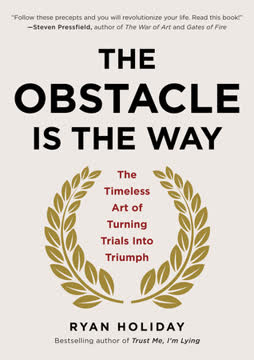Key Takeaways
1. The Digital Revolution Transforms Information Organization
In the third order of order, knowledge doesn't have a shape. There are just too many useful, powerful, and beautiful ways to make sense of our world.
From atoms to bits. The digital revolution has fundamentally changed how we organize and access information. Unlike physical objects, digital information can be infinitely rearranged and accessed in multiple ways simultaneously. This shift from atoms to bits allows for unprecedented flexibility in categorization and retrieval.
Three orders of order. The author describes three "orders of order":
- First order: Physical organization of objects (e.g., books on shelves)
- Second order: Analog metadata (e.g., card catalogs)
- Third order: Digital information and metadata
The third order enables a "miscellaneous" approach to information, where items can belong to multiple categories and be organized in countless ways, freeing us from the constraints of physical organization.
2. Traditional Classification Systems Face Limitations
You can't publish a book without using glue: The pages have to go in one order and not another, so the Mortimer Adlers of the world have to come up with an order for them.
Physical constraints. Traditional classification systems like the Dewey Decimal System were designed for physical libraries and are limited by the need to place each item in a single location. These systems often reflect the biases and worldviews of their creators, leading to problematic categorizations.
Evolving knowledge. As our understanding of the world changes, rigid classification systems become outdated. Examples include:
- Racial categories in censuses
- Definitions of planets
- Medical classifications of conditions
The digital world allows for more flexible and evolving categorization systems that can adapt to new knowledge and perspectives.
3. The Rise of Tagging and User-Generated Metadata
To get as good at browsing as we are at finding—and to take full advantage of the digital opportunity—we have to get rid of the idea that there's a best way of organizing the world.
Democratized categorization. Tagging systems, like those used on websites such as Delicious and Flickr, allow users to create their own categories and metadata. This bottom-up approach to organization reflects how people actually think about and use information.
Benefits of tagging:
- Flexibility: Items can belong to multiple categories
- Scalability: Systems grow organically with user input
- Relevance: Categories reflect actual use and interests
- Serendipity: Unexpected connections emerge
However, tagging also introduces challenges, such as inconsistent terminology and the need for systems to manage and make sense of user-generated metadata.
4. The Power of Miscellaneous Organization
In the miscellaneous order, a topic is anything someone somewhere is interested in.
Embracing messiness. The digital world allows us to embrace the inherent messiness of information. Instead of forcing items into rigid categories, we can allow for multiple, overlapping organizations that reflect different perspectives and needs.
Faceted classification. Systems like faceted classification allow for multiple, simultaneous ways of organizing information. This approach, pioneered by S.R. Ranganathan in the 1930s, has found new relevance in the digital age.
Examples of miscellaneous organization:
- Amazon's product categorization and recommendation system
- Wikipedia's interconnected articles and categories
- Google's ability to find relevant information across diverse sources
By allowing information to be miscellaneous, we increase its potential value and discoverability.
5. Social Knowledge and Collaborative Understanding
Knowledge—its content and its organization—is becoming a social act.
Collective intelligence. The internet has enabled new forms of collaborative knowledge creation and curation. Platforms like Wikipedia demonstrate how a large group of people can work together to create and maintain complex bodies of knowledge.
Characteristics of social knowledge:
- Iterative improvement through discussion and editing
- Transparency of process and decision-making
- Rapid response to new information and changing contexts
- Diverse perspectives contributing to a more comprehensive understanding
This shift towards social knowledge challenges traditional notions of expertise and authority, emphasizing the importance of process and collaboration over individual brilliance.
6. The Evolution of Authority and Expertise
Authority now comes from enabling us inescapably fallible creatures to explore the differences among us, together.
Changing nature of authority. Traditional sources of authority, such as encyclopedias and academic institutions, are being challenged by more open and collaborative systems. The digital age requires a new understanding of expertise that values:
- Transparency and openness to criticism
- Ability to synthesize and contextualize information
- Facilitation of discussion and knowledge-sharing
Distributed expertise. Instead of relying on a small number of recognized experts, we're moving towards a model where expertise is distributed across networks of individuals with diverse knowledge and experiences.
This shift doesn't negate the value of deep expertise but changes how it's developed, recognized, and applied in a more connected and rapidly evolving information landscape.
7. The Future of Knowledge in a Miscellaneous World
Making sense of what we know is the broader task, a task for understanding within the infrastructure of meaning.
From knowledge to understanding. As information becomes more abundant and easily accessible, the focus shifts from accumulating knowledge to developing understanding. This involves:
- Making connections between diverse pieces of information
- Contextualizing knowledge within broader frameworks
- Applying information to solve real-world problems
Implications for business and society:
- Education systems need to emphasize critical thinking and information literacy
- Businesses must adapt to more open and collaborative knowledge management
- Innovation increasingly comes from unexpected connections and combinations
The miscellaneous organization of information enables new forms of creativity and problem-solving by allowing us to see and explore connections that were previously hidden by rigid categorization systems.
Last updated:
FAQ
What's Everything Is Miscellaneous about?
- Digital Transformation: The book explores how the digital age has revolutionized the organization and access to information, shifting from rigid structures to more fluid, miscellaneous arrangements.
- Impact on Knowledge: It discusses the implications of this shift for knowledge management, highlighting the potential for multiple categorizations and connections in the digital realm.
- Cultural Changes: The book examines how these changes affect our understanding of knowledge, authority, and societal interactions with information.
Why should I read Everything Is Miscellaneous by David Weinberger?
- Modern Information Insights: It offers valuable insights into the complexities of information organization in the digital age, crucial for those interested in knowledge management or IT.
- Practical Applications: The ideas presented can help businesses and individuals adapt to new realities of information access, improving decision-making and efficiency.
- Challenging Concepts: The book encourages readers to rethink traditional notions of order and authority, fostering a new perspective on knowledge interaction.
What are the key takeaways of Everything Is Miscellaneous?
- Order to Miscellaneous Shift: Information is no longer confined to strict categories; it can be organized in various ways to suit individual needs.
- Role of Tags and Metadata: Tagging and metadata are crucial for making information more accessible and relevant, enhancing user efficiency.
- Interconnected Knowledge: Knowledge is increasingly interconnected, with new insights emerging from relationships between disparate information pieces.
How does Everything Is Miscellaneous define knowledge in the digital age?
- Fluid and Dynamic: Knowledge is portrayed as fluid, allowing for multiple interpretations and categorizations, unlike static past definitions.
- User-Centric Organization: It argues for user-driven knowledge organization, enabling individuals to categorize information based on unique needs.
- Social Construct: Knowledge is seen as a social construct, shaped by collective input rather than dictated by a single authority.
What are the best quotes from Everything Is Miscellaneous and what do they mean?
- “Information doesn’t just want to be free. It wants to be miscellaneous.”: This encapsulates the book's thesis that digital information thrives in variety and flexibility.
- “The physical limitations that silently guide the organization of an office supply store also guide how we organize our businesses, our government, our schools.”: It highlights that traditional methods are constrained by physical realities, which digital can transcend.
- “Everything has its places, not a single place.”: This emphasizes that digital information can exist in multiple contexts and categories, reflecting knowledge complexity.
How does Everything Is Miscellaneous address the limitations of traditional classification systems?
- Rigid Structures: Traditional systems like the Dewey Decimal Classification are critiqued for their inability to accommodate modern knowledge complexity.
- Single Access Point: These systems often force information into a single category, limiting access and understanding.
- Need for Flexibility: The book advocates for flexible, user-driven classification approaches reflecting interconnected information nature.
What role does metadata play in the digital age according to Everything Is Miscellaneous?
- Enhances Understanding: Metadata provides context, helping users make sense of the data they encounter.
- Facilitates Navigation: It allows users to filter and find relevant content efficiently, acting as a guide amidst information chaos.
- Supports Collaboration: Metadata enables collaborative knowledge creation, fostering a richer understanding through diverse perspectives.
How does Everything Is Miscellaneous relate to the concept of authority in knowledge?
- Decentralization of Authority: The digital age is leading to a decentralization of authority, with traditional knowledge gatekeepers losing control.
- Emergence of New Experts: New forms of expertise are emerging, often based on collective contributions rather than individual credentials.
- Rethinking Credibility: The book emphasizes community and collaboration's importance in defining credible knowledge.
What examples does David Weinberger provide to illustrate his points in Everything Is Miscellaneous?
- Amazon and Wikipedia: These platforms are used as examples of how digital systems reshape knowledge organization through tagging and collaborative editing.
- Library Systems: Traditional library systems are contrasted with flexible, user-driven digital approaches.
- Retail Environments: Retailers like Staples are examined for adapting information organization strategies to better serve digital-age customers.
How does Everything Is Miscellaneous define the three orders of order?
- First Order: Physical organization of objects, straightforward and based on tangible attributes.
- Second Order: Structured information like libraries and databases, requiring abstraction for effective management.
- Third Order: Digital, miscellaneous world where information is interconnected and dynamic, allowing nuanced understanding.
What challenges does Everything Is Miscellaneous identify in the digital age?
- Information Overload: The abundance of online information can lead to confusion and difficulty discerning credible sources.
- Fragmentation of Knowledge: Knowledge can become fragmented as individuals curate their own information, hindering collective understanding.
- Maintaining Quality: Ensuring information quality and reliability is challenging, emphasizing transparency and collaboration's importance.
How does Everything Is Miscellaneous envision the future of knowledge organization?
- Emphasis on Miscellaneousness: Future organization will prioritize flexibility and adaptability in categorizing and accessing information.
- Integration of Technology: Advances will enhance our ability to connect and retrieve information, making knowledge more accessible.
- Collaborative Knowledge Building: Knowledge will increasingly be built collaboratively, with users shaping the information landscape in real-time.
Review Summary
Everything Is Miscellaneous receives mixed reviews, with ratings ranging from 1 to 5 stars. Readers appreciate Weinberger's insights on digital information organization and the changing landscape of knowledge management. Many find the book thought-provoking, especially regarding the evolution of classification systems and the potential of digital technology. However, some critics, particularly librarians, argue that Weinberger oversimplifies or misunderstands certain aspects of information science. The book's relevance has diminished somewhat since its 2007 publication, as some examples and technologies discussed are now outdated.
Similar Books
Download PDF
Download EPUB
.epub digital book format is ideal for reading ebooks on phones, tablets, and e-readers.










